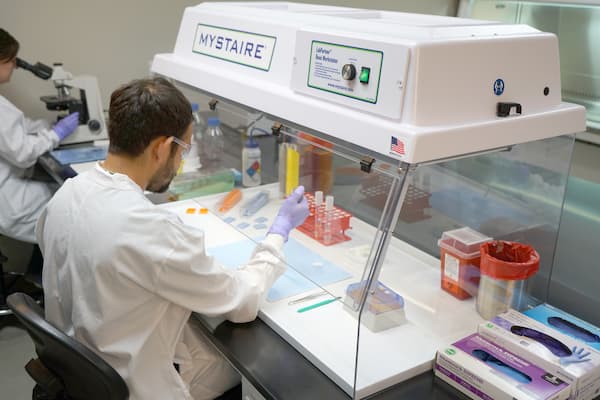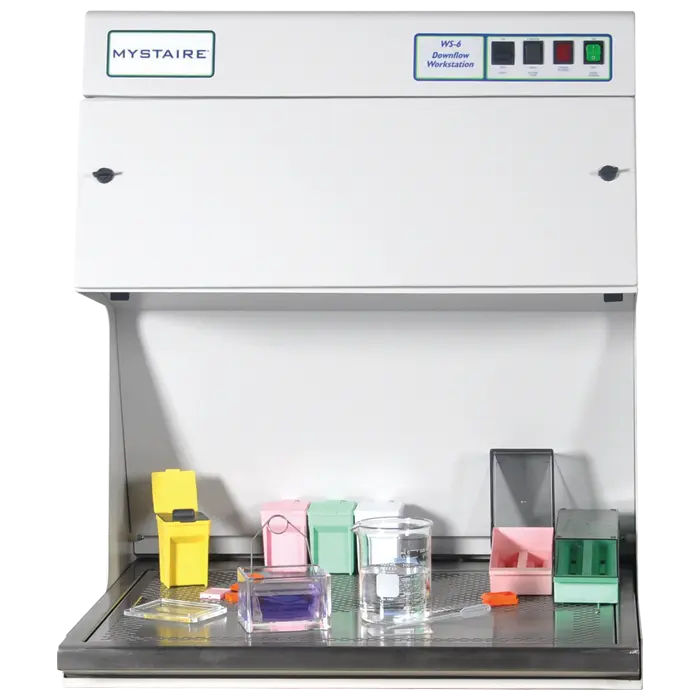What Is Histology?
Histology is the branch of biology and medicine that focuses on the study of the microscopic structure of tissues and cells. It involves examining the organization, composition, and relationships of cells within tissues, as well as their functions and interactions. Histology is essential for understanding the structure and function of organs, systems, and organisms at a cellular level.
Histologists use specialized techniques to prepare tissue samples for microscopic examination. These techniques might include fixation (preserving the tissue's structure), sectioning (cutting thin slices of tissue), staining (using dyes to highlight specific cellular components), and mounting the tissue sections on slides for observation under a microscope.
The information obtained from histological studies can help researchers and medical professionals better understand disease processes, developmental stages, and normal tissue function. Histology is used in various fields, including medical diagnosis, research, and education. It plays a crucial role in fields such as pathology, anatomy, physiology, and embryology.
Why Are Fume Hoods Important To Histological Methods?
Fume hoods and ductless fume hoods, such as the LabPartner™ Ductless Workstation or the Downflow Workstation are essential to histological methods and other laboratory procedures because they provide a controlled environment for working with hazardous or volatile substances. Here's why these workstations are crucial in histology and other laboratory settings:
- Containment of Hazardous Chemicals: Fume hoods are designed to contain and control the release of hazardous chemical vapors, fumes, and odors that are generated during histological procedures. This is essential for ensuring the safety of laboratory personnel and preventing these harmful substances from spreading into the surrounding workspace.
- Protection of Laboratory Personnel: Fume hoods create a physical barrier between the operator and the potentially hazardous materials being used. This protection minimizes the risk of exposure to toxic, irritant, or harmful chemicals, which is especially important in histology, where various chemicals are used for tissue processing, staining, and mounting.
- Prevention of Cross-Contamination: In histology and other laboratory work, preventing cross-contamination between samples or between different experiments is crucial. Fume hoods help maintain a separate and controlled environment for each procedure, reducing the risk of unintended interactions or contamination.
- Controlled Airflow: Fume hoods have exhaust systems that draw air from the workspace into the hood and then safely expel it through ventilation systems. This controlled airflow helps to remove potentially hazardous fumes and maintain a safe and clean working environment.
- Fire Safety: Some histological procedures involve flammable chemicals. Fume hoods provide a contained space where any flammable vapors generated can be safely ventilated, reducing the risk of fire or explosion.
- Regulatory Compliance: Many laboratory safety regulations and guidelines require the use of fume hoods when working with certain chemicals or conducting procedures that generate hazardous fumes. Using fume hoods ensures compliance with these regulations and helps maintain a safe working environment.
- Optimal Staining and Processing: Certain histological procedures, like working with volatile chemicals or using dyes, require precise control of environmental conditions to achieve accurate and consistent results. Fume hoods provide a controlled environment that helps maintain the integrity of these procedures.
Histology Solutions: LabPartner™ Ductless Workstation
The LabPartner™ Workstations are compact and ductless solutions designed for capturing fumes and particulates during routine laboratory analysis. These workstations are intended to provide a controlled environment for tasks that involve potentially hazardous substances or materials. Some key features include:
- User-controlled variable air volume, 30-120 fpm
- Full access sash opening
- 360° clear construction for optimal visibility
- Vapor-proof fluorescent light
- Removable polypropylene spill tray
- Optional vanometer airflow monitor

Overall, LabPartner Workstations aim to provide a safe and controlled environment for laboratory analysis by capturing and controlling fumes and particulate matter. Their compact design, adjustable features, and durable construction make them suitable for a range of applications in laboratory settings.
Histology Solutions: Downflow Workstation
Mystaire Downflow Workstations provide a controlled environment that combines effective containment of hazardous materials with the ability for close sample inspection. Their stand-alone and ductless nature makes them a versatile solution for laboratories and industrial settings where worker safety and environmental protection are paramount. The combination of stainless-steel surfaces, downward airflow, and a comprehensive filtration system ensures a high level of operator protection and minimizes the release of hazardous substances into the surroundings. Some key features include:
- Lightweight, durable aluminum frame
- Corrosion-resistant powder-coated exterior
- Stainless steel work surface
- Internal fluorescent light
- Automatic filter monitoring and alarm

Interested in learning more about Mystaire solutions? Fill out a quote request, and a member of our team will reach out to you with more information specific to your applications.